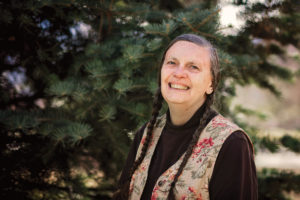Making physics less alpha
Making physics less alpha
Barbara Whitten ’77 (PhD) has devoted her career to the study of physics— and how to attract and retain women in the discipline.

CRITICAL MASS: As a discipline, physics still lags behind other natural sciences in working toward gender parity. But it has improved with the help of programs inspired by Whitten’s research. (Photo: Kate Carlton)
As a physics student in the 1970s, Barbara Whitten ’77 (PhD) often found herself one of the only women—if not the only woman—in her science classes.
“Most of the time growing up and when I was in graduate school, I thought I was absolutely unique in the world,” Whitten says. “It sounds egotistical, but I really did, because I didn’t know any other women who were like me and so badly wanted to study physics.”
Whitten earned her PhD in algebraic statistical mechanics at Rochester, landed a research job at Lawrence Livermore National Laboratory, and taught physics at both Miami University and Colorado College, from which she retired last year.
Although she spent many years researching algebraic statistical mechanics and atomic and molecular physics, the project for which she is perhaps best known concerns the field of physics more broadly.
Whitten was a physics professor at Colorado College—the first female member of the physics faculty—when she won a National Science Foundation grant to develop a site-visit program to help improve the climate for female physicists. As part of the project, Whitten led a team that visited 15 colleges across the United States, interviewing faculty, staff, and students to find out what might make departments better able to attract and retain women. They compiled their findings and recommendations in a report published in Physics Today in 2003.
That report—“What Works for Women in Undergraduate Physics?”—has been so influential in the field that the American Association of Physics Teachers honored Whitten with its 2018 Hans Christian Oersted Medal. The medal, whose previous winners include Carl Sagan and Richard Feynman, was awarded to Whitten in recognition of her “outstanding, widespread, and lasting impact on the teaching of physics through her work on diversity and inclusion in physics.”
Physics Ed: Honors All Around
Whitten is one of a few members of the Rochester community who have been honored by the American Association of Physics Teachers in this and in past years.
Also recognized this year was Mark Beck ’85, ’92 (PhD) who won the Floyd K. Richtmyer Memorial Lecture Award, given to a physics educator who has “made outstanding contributions to physics and their communication to physics educators.” Beck, who is the Benjamin H. Brown Professor of Physics and chair of the physics department at Whitman College in Walla Walla, Washington, is noted for designing and carrying out tests of quantum theory with undergraduate students. He’s the author of the textbook Quantum Mechanics: Theory and Experiment (Oxford University Press, 2012).
Steven Manly, a professor of physics and the director of undergraduate research at the University, received the association’s honor for Excellence in Undergraduate Teaching in 2007.
Whitten recalls her early transition from natural to social scientific research. As a physicist, she says, “I was looking for a single cause and effect.”
Instead, she found multiple factors leading to a more welcoming environment for women. The most effective strategies included mentoring and a variety of student-centered initiatives that helped make students feel part of a department as soon as they declared themselves physics majors. Notably, she found that approaches that led to better retention of women correlated with better retention of all physics students.
According to Cindy Blaha, a professor of physics and astronomy at Carleton College, who works with Whitten on increasing diversity within the discipline, Whitten’s research marked a turning point.
“For the first time, departments were actually listening to the issues and trying to implement Barbara’s suggestions,” she says.
In her introductory courses, Whitten always made it a point to highlight the work of women such as Vera Rubin, who found some of the best evidence of dark matter; Katherine Johnson, an African-American mathematician at NASA, featured in the movie Hidden Figures, whose calculations were critical to the success of the Apollo 11 mission to the moon; or Nobel Prize-winning botanist Barbara McClintock, whose pioneering work in cytogenetics led to her 1983 Nobel Prize. All of these women, she says, “ignored social cues that told them they didn’t belong.”
Now a professor emerita, she continues her work to increase diversity in physics. For example, she’s working with Blaha and other physicists on a National Science Foundation–funded project to develop a mentoring program that connects female physics faculty across the country who feel isolated because of their gender, race, or sexual orientation.
Above all, she can’t imagine giving up her passion for science research.
“I wanted to be a physicist from the time I found out what physics was,” Whitten says. “I just fell madly in love when I was 16, and I have never, ever fallen out of love with physics.”


